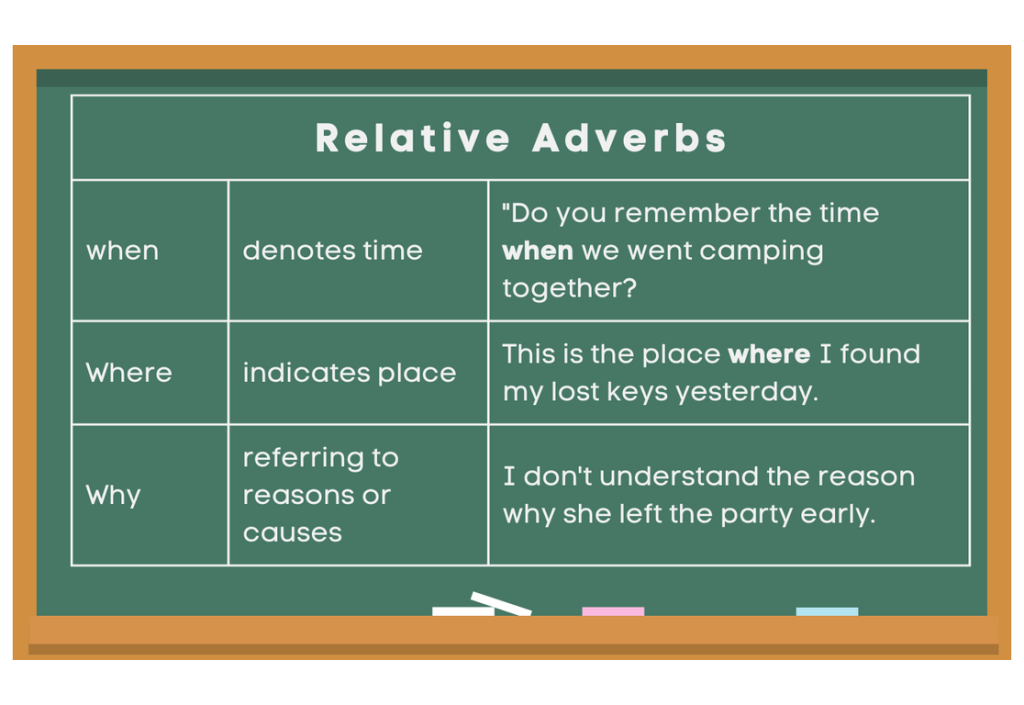What are Relative Adverbs? – Definition and Usage
Table of Contents
Introduction
Relative Adverbs
Relative adverbs play a crucial role in connecting clauses and providing essential information about time, place, reason, or manner. Let’s delve into the world of relative adverbs and gain insights into their usage and significance in language.
Analogy of Definition
What are Relative Adverbs?
Relative adverbs, such as ‘when‘, ‘where‘, and ‘why‘, serve a dual purpose as adverbs and relative pronouns, linking clauses and offering valuable context about the situation being described.
Method
Identifying Relative Adverbs
Recognizing relative adverbs involves understanding their function in connecting clauses and conveying specific information about time, place, reason, or manner. By analyzing the context of the sentence, one can spot the relative adverb and comprehend its role in the overall meaning.

Relative adverbs offer a simpler alternative to more formal constructions
This is the park in which we had our picnic. → This is the park where we had our picnic
I recall the time at which we visited Paris. → I recall the time when we visited Paris
Please explain the reason for which you arrived late. → Please explain why you arrived late
Examples
Example 1: The day when we first met remains etched in my memory.
Example 2: This is the place where I discovered the ancient artifact.
Example 3: That is the reason why she decided to pursue a new career path.
These examples illustrate the use of relative adverbs in sentences, where ‘when’, ‘where’, and ‘why’ provide additional information about time, place, and reason, respectively. By identifying the relative adverbs, one can understand the context and connections between clauses more effectively.
Quiz
Tips and Tricks
1. Time Matters
Tip: When identifying a relative adverb, consider whether it provides information about time in the relative clause.
2. Location, Location, Location
Tip: Look for relative adverbs that indicate place and connect the relative clause to the main clause.
3. Reasoning it Out
Tip: Pay attention to relative adverbs that convey the reason for a particular action or situation.
4. Manner of Speaking
Tip: Keep an eye out for relative adverbs that describe the manner in which something is done
5. Practice Makes Perfect
Tip: Enhance your understanding of relative adverbs by practicing with a variety of sentences and contexts.
Real life application
Real-Life Applications of Relative Adverbs
Scenario: The Adventure of the Lost Map
In a thrilling adventure, a group of explorers relied on their knowledge of relative adverbs to decipher an ancient map and uncover hidden treasures. By understanding the significance of ‘where’ and ‘why’ in the clues, they successfully navigated through challenging terrain and solved the mystery.
Challenge: The Puzzle of the Missing Key
A detective utilized relative adverbs to piece together the events leading to a mysterious disappearance. By analyzing the ‘when’ and ‘why’ of the situation, the detective uncovered crucial details and solved the case, showcasing the practical application of relative adverbs in real-life scenarios.
FAQ's
Like? Share it with your friends






